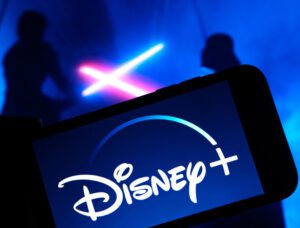 “On TV And Video” is a column exploring opportunities and challenges in advanced TV and video.
“On TV And Video” is a column exploring opportunities and challenges in advanced TV and video.
Today’s column is written by Joan FitzGerald, an independent consultant.
In our entertainment-overloaded, attention-starved digital age, every teacher knows they need to balance the long and thoughtful with the short and punchy, or else they’ll lose the attention of the class.
This has never been truer than in video advertising. Building ad formats and ad environments where attention can thrive is the new mandate as consumers have more control over their viewing environment. We need to rethink our metrics to focus on attention – and fast.
Impressions, or exposure to an advertisement, is the foundational advertising metric that the media industry has relied upon for decades. It is coming under more scrutiny now than ever. The impression metric is grounded in the assumption that consumers pay attention. Unfortunately, attention, especially among younger consumers, may have been inalterably diverted from the 30-second commercial. New ad formats and contexts are the keys to getting their attention back.
Media brands like Fox’s True[x] introduced the six-second spot. Turner has done ground-breaking research on ad context. Google pioneered giving consumers more control of their ad experience.
Research from TVision Insights suggests shorter commercials deliver on ROI; it found that Discovery’s Shark Week promotional ad viewers who paid attention for at least three seconds had a tune-in rate 68% higher than average. And iSpot.TV calculated that 28% of attention is driven by program-related factors, and the rest by factors such as ad creative and creative wear-out, the point where the ad loses its effectiveness due to repeated airings.
On digital platforms, marketers and digital ad platforms long ago realized that commercials lasting 30 seconds – or even 15 – are non-starters in most contexts. How long the commercial actually appeared on the device before the next commercial started or before tune-away was easily measured. Digital ad platforms saw that they had to go shorter or give consumers more options, such as skip buttons, to control the experience to retain their audience.
On television, 15- and 30-second commercials have been the mainstays of the business. But, while it’s theoretically possible to measure how long the commercial appeared on the TV screen, the metric is not used in our transactional systems. Nielsen’s measurement standard is a minute and not granular enough to untangle this question. Television set-top box data doesn’t always have actual end times – these are often modeled.
The problem with commercial length as a transactional metric is that the ad buyer may assume that a six-second commercial has less value than a 30-second commercial because it’s shorter. This is too simplistic an evaluation given today’s advertising dynamics. In today’s world of lower attention spans and more ad avoidance, shorter commercials may have higher value.
There is emerging research that shows consumer attention and comprehension can be captured in seconds. The Media Ratings Council (MRC) set the digital video viewability standard, which gets us to “opportunity to see” the ad – the step before attention – at only two seconds. MRC found that recall tripled as digital video ads moved from the lowest to highest levels of viewability.
The consumer experience may be better with shorter commercials on linear TV because commercial pods can be shorter. Consumers may find that tune-away isn’t worth it if commercials are shorter. Six seconds may be just the right lead-in to a rich interactive experience so that consumers search or click-through for more.
The reality is that commercial length is not a good surrogate measure for attention, and probably never was. Just because the commercial invites the consumer to watch for 15, 30 or even 60 seconds does not mean that it sparked the consumer’s attention and created comprehension for the brand.
Marketers today know that consumer attention matters, but they are not sure they need a 30-second commercial to get there. Worse, they wonder if the 30-second commercial is just an idealized version of something that is actually self-defeating; if the consumer skips the ad because it’s perceived as too long, should a brand have used that ad in the first place?
Marketers may no longer have the luxury of building the brand story in one long creative execution. We may have to start with shorter commercials and build the story through ad formats with more creativity and ingenuity. Even in this attention-starved world, commercials – with a bit more creativity and a lot more ad technology – can continue to grab consumers’ attention and compel them to action.
The ad world is changing. We need to make sure our definition of impression withstands the test of these digital times. Media brands must ensure that impression means attention and is relevant to the video advertising world we live in today. That means understanding what it takes to get consumers to pay attention to the brand message, and inventing new ad formats and programming context to get us there.
Follow AdExchanger (@adexchanger) on Twitter.











